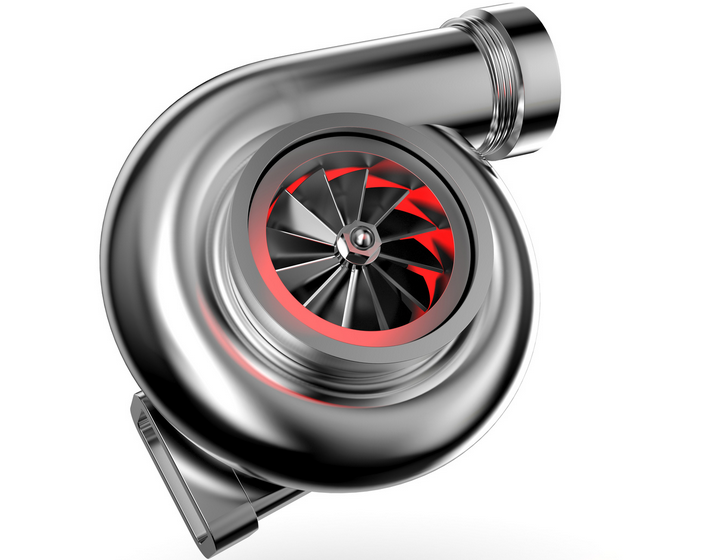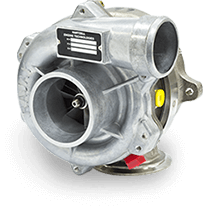Little Known Questions About Turbochargers.
Table of ContentsSome Known Details About Turbochargers Turbochargers Fundamentals ExplainedThe Single Strategy To Use For Turbochargers
7 (in gas engines). The extra fuel is not burned (as there is insufficient oxygen to finish the chain reaction), rather it goes through a phase change from atomized (liquid) to gas. This stage modification soaks up heat, and the included mass of the extra fuel reduces the typical thermal energy of the charge and exhaust gas.A wastegate manages the exhaust gas flow that enters the exhaust-side driving turbine and for that reason the air consumption into the manifold and the degree of enhancing. It can be managed by a boost pressure assisted, generally vacuum hose pipe accessory point diaphragm (for vacuum and positive pressure to return commonly oil polluted waste to the emissions system) to require the spring-loaded diaphragm to remain closed till the overboost point is noticed by the ecu or a solenoid operated by the engine's electronic control system or a increase controller.

To prevent this from taking place, a valve is fitted between the turbocharger and inlet, which vents off the excess atmospheric pressure. These are referred to as an anti-surge, diverter, bypass, turbo-relief valve, blow-off valve (BOV), or dispose valve. It is a pressure relief valve, and is usually run by the vacuum from the intake manifold.
The air is generally recycled back into the turbocharger inlet (diverter or bypass valves), however can also be vented to the atmosphere (blow off valve). Recycling back into the turbocharger inlet is needed on an engine that utilizes a mass-airflow fuel injection system, due to the fact that dumping the extreme air overboard downstream of the mass air flow sensor triggers an excessively rich fuel mixturebecause the mass-airflow sensing unit has actually already accounted for the extra air that is no longer being utilized.


All About Turbochargers

Turbocharging can increase power output for a provided capacity or boost fuel performance by enabling a smaller sized displacement engine - turbochargers. The 'Engine of the year 2011' is an engine utilized in a Fiat 500 geared up with an MHI turbocharger. This engine additional reading lost 10% weight, conserving as much as 30% in fuel consumption while providing the same peak horse power (105) as a 1. A number of Japanese companies produced turbocharged high-performance bikes in the early 1980s, such as the CX500 Turbo from Honda- a transversely installed, liquid cooled V-Twin also readily available in naturally aspirated type. Ever since, few turbocharged motorcycles have actually been produced. This is partly due to an abundance of larger displacement, naturally aspirated engines being readily available that provide the torque and power benefits of a smaller displacement engine with turbocharger, however do return more linear power attributes.
The first turbocharged diesel truck was produced by (Swiss Machine Works Saurer) in 1938 (turbochargers). A natural use of the turbochargerand its earliest understood use for any internal combustion engine, starting with experimental installations in the 1920sis with airplane engines. As an aircraft reaches greater elevations the pressure of the surrounding air quickly falls off.
Nevertheless, since the charge in the cylinders is pushed in by this air pressure, the engine generally produces just half-power at full throttle at this elevation. Pilots would like to make the most of the low drag at high elevations to go faster, but a naturally aspirated engine does not produce sufficient power at the very same elevation to do so.
As seen in the table below, there is significant scope for forced induction to make up for lower density environments. A turbocharger solutions this problem by compressing the air back to sea-level pressures (turbo-normalizing), and even much higher (turbo-charging), in order to produce rated power at high altitude. Because the size of the turbocharger is visite site picked to produce an offered quantity of pressure at high elevation, the turbocharger is extra-large for low altitude.
Early systems utilized a fixed wastegate, leading to a turbocharger that functioned similar to a supercharger. Later systems made use of an adjustable wastegate, managed either by hand by the pilot or by an automatic hydraulic or electric system. When the airplane is at low altitude the wastegate is generally totally open, venting all the exhaust gases overboard.
Turbochargers Things To Know Before You Buy
The elevation at which the wastegate totally closes and the engine still produces full power is the critical altitude. When the airplane climbs up above the important altitude, engine power output reduces as elevation increases, just as it would in a naturally aspirated engine. With older supercharged aircraft without Automatic Increase Control, the pilot must continually adjust the throttle to keep the needed manifold pressure during climb or descent.